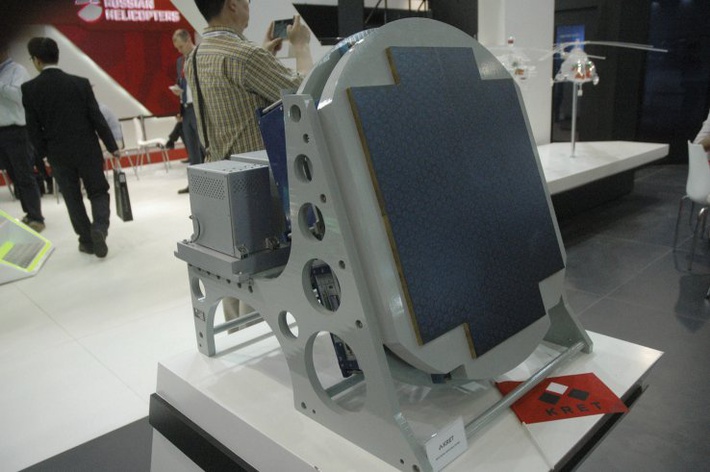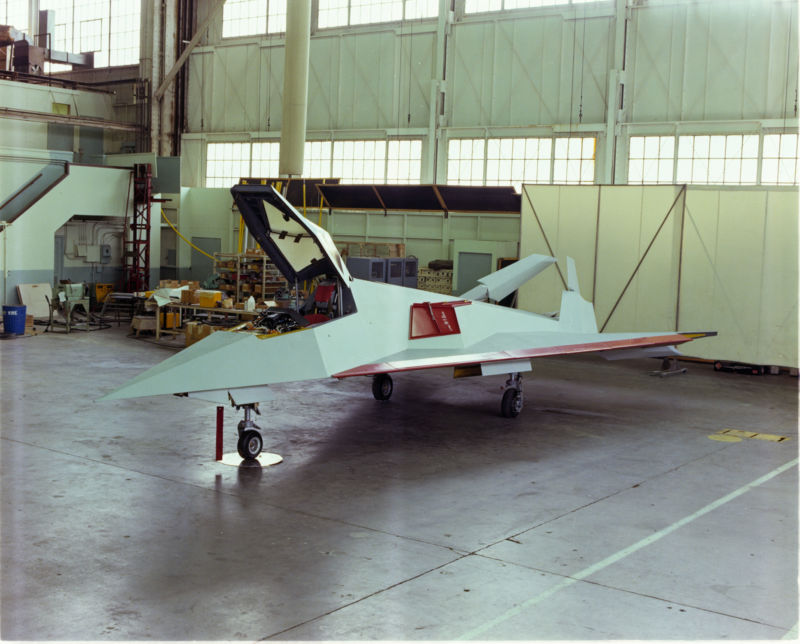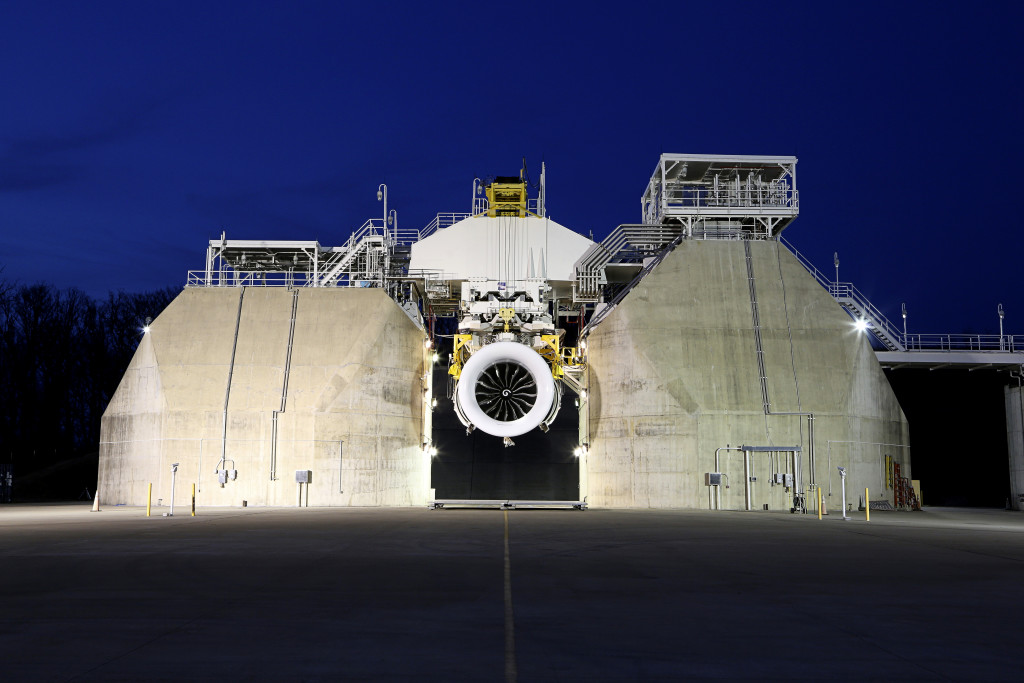gadeshi
Senior Member
- Joined
- Jun 19, 2013
- Messages
- 9,223
- Likes
- 6,636















On December 1, 1977, a truly strange bird took flight for the first time in the skies over a desolate corner of Nevada. Looking more like a giant faceted gemstone than something designed to lift-off, the aircraft (nicknamed the "Hopeless Diamond") had been flown out to Groom Lake in parts aboard a Lockheed C-5 Galaxy cargo plane.
While much of the Hopeless Diamond was a conglomeration of spare parts from other existing aircraft, it was the first of a new breed—the progenitor of Stealth. Hopeless Diamond was the first of two technology demonstrators built for a program called "Have Blue," an initiative program spawned from a Defense Advanced Research Projects Agency effort to create an aircraft that could evade the Soviet Union's increasingly sophisticated integrated air defense systems.
Forty years have passed since the Have Blue project's two demonstrator aircraft—built on a relative shoestring budget by Lockheed's Skunk Works—flew over the Nevada desert and ushered in a new era. Over time, the engineering, physics, and mathematics that created the Have Blue prototypes would be refined to create the F-117 Nighthawk stealth fighter and serve as the basis for the designs of the F-22 Raptor and F-35 Lightning II.
This miltech evolution began because Lockheed was willing to internally fund an effort to win a program from which it had been essentially excluded by DARPA. Using its engineering talent, some sophisticated mathematics, and the best computing technology of the day, Lockheed's Skunk Works rapidly created a prototype on the cheap. That prototype demonstrated what Lockheed Martin Skunk Works Senior Fellow Edward Burnett described to Ars as "our one miracle"—an aircraft shape that had a radar cross section smaller than a bird's.
Ironically, at about the same time, Denys Overholser—a Skunk Works mathematician and radar expert—discovered equations in a nine-year old research paper from Russian scientist Pyotr Ufimtsev. Recently translated by the Air Force's Foreign Technology Division, the paper reworked some of Maxwell's Equations to predict the radar reflectivity of a geometric shape. In his memoir, then-Skunk Works chief Ben Rich called the equations the "Rosetta Stone breakthrough for stealth technology."
The Skunk Works team delivered their models to White Sands in March of 1976. "They put our model up on a pole at the radar return range," Burnett recounts. "People were saying, we see your model. But it turns out they did not see the model—they were seeing a lot of other things, not the actual vehicle model. That original shape was not something that could have been made into an airplane, but it definitely showed the technologies were feasible."
In fact, what the Air Force test team picked up was the pole that they provided to mount the models on, which had bigger radar return than both the models. Lockheed and Northrop each spent hundreds of thousands of dollars from their budgets to build new poles with smaller radar returns—poles with 10 decibels less return than the models themselves.
Only some paragraphs are presented here.The "Hopeless Diamond" had, as Rich recounted in his memoir, a radar cross section that was a thousandth of that of the D-21 reconnaissance drone—a small uncrewed supersonic drone that had been designed to fly deep into Chinese airspace to monitor China's nuclear tests. Rich said that Overholser told him the design, implemented as a full fighter-sized aircraft, would have the apparent radar cross section of "an eagle's eyeball." During testing at White Sands, the radar return increased by about 1.5 decibels from the droppings left on it by roosting birds.






I still don't know what the point is considering the limited payload aside from the point they are trying to make pilots obsolete.Boeing just revealed an autonomous plane that can refuel fighter jets in midair
Mark Matousek

Boeing's MQ-25 Stingray would be able to carry 15,000 pounds of fuel up to 500 miles.Boeing
__________________
- Boeing just revealed its design for an autonomous plane that can refuel fighter jets in midair.
- The design is part of a competition held by the US Navy.
- Boeing's MQ-25 Stingray would be able to extend the range of a fighter jet by up to 400 miles, according to a GeekWire report.
- Boeing is competing with Lockheed Martin and General Atomics for the contract.

X-254: One of the prototypes.

X-45A: Another prototype.

X-47B: Yet another prototype.

X-47A: Further, yet another prototype.
That, and increasing stealth.I still don't know what the point is considering the limited payload aside from the point they are trying to make pilots obsolete.
Can't Indian scientists working on Kaveri take lessons from these big companies and come our with innovative solutions?The World’s Hugest Jet Engine Is Wider Than a 737’s Fuselage

GE Aviation spent $10 million preparing its Peebles Test Operation in Ohio for the GE9X. Improvements include the largest “bellmouth inlet duct”—the white funnel attached to the front of the engine during testing.GE AVIATION
We hear a lot about success stories. We don't hear about the multiple failures preceding each success story. Failure is heavily criticized, and the reason cited is taxpayer's money. Frankly, it is hard to argue whether money spent on research that leads to an unsuccessful design is useful expenditure or squandering of money.Can't Indian scientists working on Kaveri take lessons from these big companies and come our with innovative solutions?
I strongly believe only innovation can make us self sufficient in engine technology. Let them make multiple models. Even if they fail, the learn lessons. "Fail fast and move on" should be the motto. One successful engine can make our fighter jets fully indigenous. We should invest on these test facilities.
Well said. Totally agree. We need to dispel the fear of wasting taxpayers money. R&D is the only way forward in self sufficiency.We hear a lot about success stories. We don't hear about the multiple failures preceding each success story. Failure is heavily criticized, and the reason cited is taxpayer's money. Frankly, it is hard to argue whether money spent on research that leads to an unsuccessful design is useful expenditure or squandering of money.
I agree with you, we need to fail fast, and even fail multiple times. More the failures, more the chances of success.
A guaranteed way of never failing is to never try. Those that never fail are those that never make any attempt.

Not necessarily it's not like we don't even know the P of propulsion technology, we did create a decent engine of our own without much help.And we are 70 years far
.....................................................

